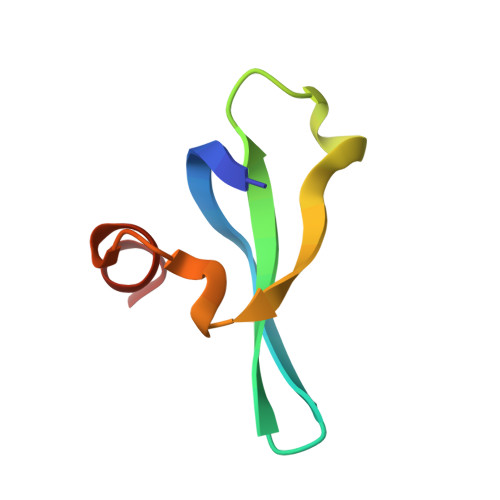Recognition and specificity determinants of the human cbx chromodomains.
Kaustov, L., Ouyang, H., Amaya, M., Lemak, A., Nady, N., Duan, S., Wasney, G.A., Li, Z., Vedadi, M., Schapira, M., Min, J., Arrowsmith, C.H.(2011) J Biol Chem 286: 521-529
- PubMed: 21047797
- DOI: https://doi.org/10.1074/jbc.M110.191411
- Primary Citation of Related Structures:
2L11, 2L12, 2L1B, 3FDT, 3GV6, 3H91, 3I90, 3I91 - PubMed Abstract:
The eight mammalian Cbx proteins are chromodomain-containing proteins involved in regulation of heterochromatin, gene expression, and developmental programs. They are evolutionarily related to the Drosophila HP1 (dHP1) and Pc (dPc) proteins that are key components of chromatin-associated complexes capable of recognizing repressive marks such as trimethylated Lys-9 and Lys-27, respectively, on histone H3. However, the binding specificity and function of the human homologs, Cbx1-8, remain unclear. To this end we employed structural, biophysical, and mutagenic approaches to characterize the molecular determinants of sequence contextual methyllysine binding to human Cbx1-8 proteins. Although all three human HP1 homologs (Cbx1, -3, -5) replicate the structural and binding features of their dHP counterparts, the five Pc homologs (Cbx2, -4, -6, -7, -8) bind with lower affinity to H3K9me3 or H3K27me3 peptides and are unable to distinguish between these two marks. Additionally, peptide permutation arrays revealed a greater sequence tolerance within the Pc family and suggest alternative nonhistone sequences as potential binding targets for this class of chromodomains. Our structures explain the divergence of peptide binding selectivity in the Pc subfamily and highlight previously unrecognized features of the chromodomain that influence binding and specificity.
Organizational Affiliation:
Ontario Cancer Institute, Campbell Family Cancer Research Institute and Department of Medical Biophysics, University of Toronto, Ontario M5G 1L7, Canada.
















